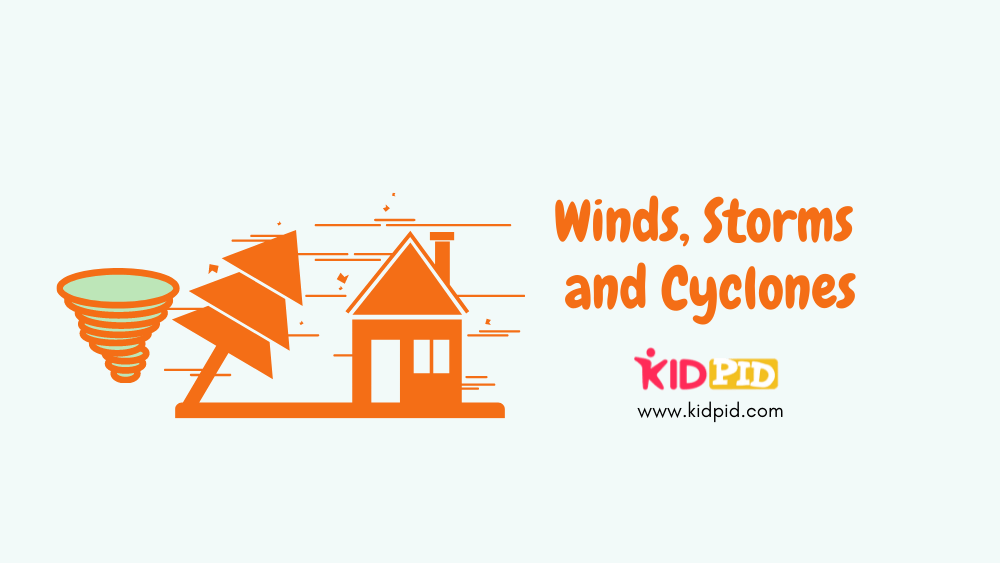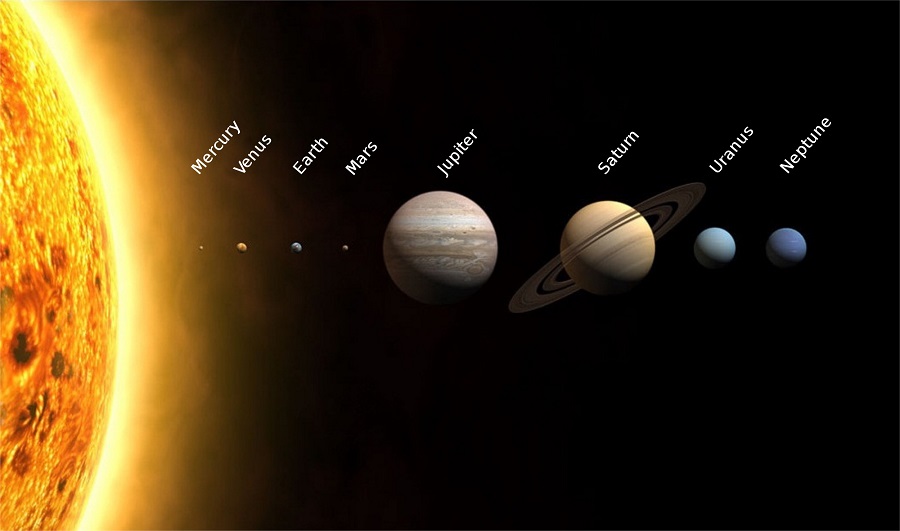Winds, Storms and Cyclones

On May 20, 2020 the super cyclone Amphaan hit the states of Orissa and West Bengal and raged for hours on end before moving on to Bangladesh on 21 May, 2020. This massively destructive cyclone had an average speed of 185km/hour with a maximum of 260km/hour. The coastal regions of West Bengal and Orissa were devastated by the cyclone and the accompanying heavy rain. The cyclone affected 18 million people and killed 90 people. Due to the COVID – 19 lockdown, evacuation centers had limited space and emergency services were delayed as well.
We can clearly understand how damaging and scary a cyclone can be. But what exactly is a cyclone? What factors contribute to it? How can we be best prepared for it? Let’s explore some of these topics by starting at the basics.
Wind – Wind is nothing but moving air.
Contents
Air Pressure and Speed:
Let’s try to understand what air pressure is. We are constantly surrounded by air, even at this moment. However, do you feel any air pressure being exerted on you right now? Let’s think of another example. When you are running, oftentimes the wind flows opposite of the direction you’re running in. You may have noticed that in such cases, running becomes slightly more difficult. Why does this happen? This is because the wind exerts a pressure on our body making it difficult for us to move. Conversely, if the wind flows in the direction we’re running, our job becomes a little easier.
Air pressure is the pressure exerted by the weight of air on the surface of the earth.
Experiment Time:
Take a bottle of cold drink. Now with the cap tightened, shake the bottle vigorously. You will notice that foam will begin to rapidly form inside the bottle and it will escape the bottle even with the cap on. What has happened here is simply an example of pressure – shaking the bottle generated large amounts of gas within the bottle and the pressure exerted by the foam caused it to overflow.
Now that we have a clear, visual idea about air pressure let’s try to understand the relation between air pressure and air speed.
Experiment Time:
Take a piece of paper and crumple it into a ball such that the ball can fit through the neck of a bottle. Hold the bottle horizontally, with the paper ball at its mouth and blow on the ball to get it inside the bottle. You will notice that instead of entering the bottle the ball actually falls out of the bottle. Why does this happen?
- In the initial position, equal amount of air pressure is exerted on the bottle and the paper ball.
- When you blow on the mouth of the bottle, air speed increases and air pressure decreases.
- As the air pressure at the mouth of the bottle is now low, the air pressure inside the bottle is high in relation to it.
- In nature all things want to remain balanced and so this in order to even out this imbalance in air pressure, air flows from high pressure to low pressure.
- Air flows from inside the bottle to the neck of the bottle and so the paper ball is pushed out.
From this experiment we can conclude two crucial points:
- High speed of air results in low air pressure
- Air always flows from a region of high pressure to a region of low pressure; the greater the difference in air pressure, the faster is the speed of air flow.
Air Pressure and Temperature:
Temperature is another factor that influences air pressure and hence air movement.
Experiment Time:
Take a stick and to its two ends tie two empty, upside-down paper bags. Hang the stick from the middle like a balance. Now light a candle under one of the paper bags making sure the bag doesn’t catch fire. You will notice that the bag under which the flame is present gradually rises up. Why does this happen?
- The heat from the flame causes air to expand.
- As air expands, the air molecules move farther apart from each other and occupy a larger space.
- This means that air pressure becomes low. That’s why we say that air becomes lighter upon heating.
- As the air becomes lighter, this bag rises up.
From this experiment we can conclude that:
- Air expands on heating
- Warm air is lighter than cold air; this why smoke always rises up from a fire.
Wind Currents of the Earth Due To Uneven Heating :
Let’s apply the logic of heating and air expansion to the earth.
As you know the Equatorial region of the earth receives maximum heat from the sun; the earth here is very hot. As a result, air expands and rises up creating a low pressure region. The 0-30 latitudes have comparatively higher pressure and therefore winds blow from the north and the south towards the equator. Similarly the air in the 60 degree latitudes is warmer compared to that of the polar regions. The warm air rises up creating a low pressure and the cold air from the polar region with comparatively higher pressure moves in towards the 60 degree latitudes.
Now that you’ve learnt the relation between air pressure and heating, isn’t it easy to understand wind circulation?
What are monsoon winds?
During summer, in the equatorial region the land warms up faster and is hotter compared to the ocean. As a result the air over the land heats up and rises, creating a low pressure. Winds flow from the ocean towards the land; these winds carry water and cause rainfall over the land. Hence, these are known as the monsoon winds.
Rainfalls bring much needed respite after the hot summer and they are very important for crop harvesting as well. However, destructive forms of rainfall such as thunderstorms, cyclones and tornadoes may occur as well which pose a severe threat to humans and their livelihood.
Let’s try to understand the factors that cause these devastating calamities and what precautions we should take in such situations.
Thunderstorm:
In tropical countries like India thunderstorms are very common.
- High temperatures heat the land, causing air to rise up and create a low pressure
- The low pressure causes strong winds to flow upwards, carrying water droplets with them.
- These water droplets cool and fall down as rain; this rain combined with the strong winds creates lightning and sound.
- This entire phenomenon is known as a thunderstorm.
Cyclone:
- Water on the earth’s surface surface takes heat from the atmosphere, turns into water vapour and rises up.
- As the water vapour releases the heat, it condenses and falls down as precipitation or rain
- The heat that was released warms up the surrounding air in the atmosphere; this air rises and creates a low pressure center; winds begin to flow to this low pressure center
- As this cycle repeats itself, a strong low pressure system is created with very strong, high-speed winds revolving around it
- This is how a cyclone develops
Eye of the storm:
The center of a cyclone is known as the eye of the storm. This is the calmest area of a raging cyclone, characterised by no clouds and mild winds. The diameter of the eye ranges from 10 – 30 km.
Cyclones are extremely destructive in nature. The strong winds are capable of pushing sea water towards the shore even when the cyclone is approaching from hundreds of kilometers away. This causes severe devastation in the coastal areas and the situation only gets worse when the cyclone reaches the land.
Effects of a Cyclone:
- Sea water enters the low-lying coastal areas reducing soil fertility
- Heavy rainfall causes extreme flooding
- High speed winds cause destruction of trees, animals, homes and phone lines and towers bringing emergency services to a halt
Fun Fact: A cyclone is known as a hurricane in the American continent while it is known as a typhoon in Japan and the Philippines.
Tornadoes:
A tornado is a dark, funnel shaped, cloud extending from the sky to the ground. Tornadoes are usually weak but can have high speeds of 300km/hour. A tornado can form within a cyclone. Tornadoes are not very common in India.
The coastal regions of India are highly prone to cyclonic storms, particularly the eastern coast which faces severe cyclones more than once a year. With time, newer technologies have developed which can warn people about approaching cyclones 48 hours in advance.
Do’s and Don’ts in a Thunderstorm/ Cyclone:
- Do not take shelter under an isolated tree or an empty field
- Do not take shelter under an umbrella with a metallic end
- Take shelter indoors; a car or a bus is also a safe place for shelter
Summary:
- Winds
- Air pressure – low and high pressure
- Air pressure and wind speed
- Air pressure and temperature
- Wind circulation
- Monsoon winds
- Thunderstorms
- Cyclones
- Tornadoes






Responses